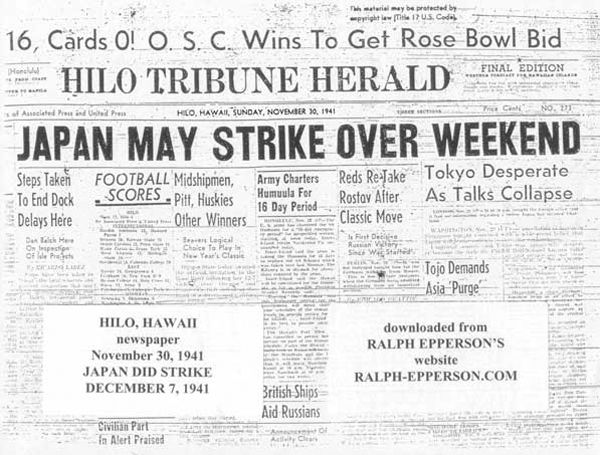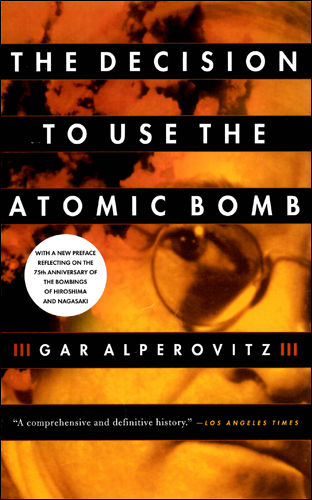Pearl Harbor Sucked
- Simian Practicalist
- Dec 7, 2021
- 7 min read
Updated: Jan 19, 2024
FDR said the Pearl Harbor attack was “a date which will live in infamy”. That is true but for more reasons than what some lamestream history sources claim. And to FDR’s credit, the words “without warning” were removed from the speech. Nonetheless, the commonly used labels of “surprise attack” and “unprovoked attack” are conveniently vague and misleading.
Whilst I am not excusing Japanese military conduct during those years (or anyone else’s), the Japanese motivation for war needs to be considered. Japan has always been low on natural resources, especially with her relatively large population. It is no secret that whilst the US’s official position was to avoid war, actions were taken to provoke it.
Carroll Quigley summed it up in Tragedy and Hope:
By the end of 1938, it was clear that Japan was losing its financial and commercial ability to buy necessary materials of foreign origin. The steps taken by the United States, Australia, and others to restrict export of strategic or military materials to Japan made this problem even more acute. The attack on China had been intended to remedy this situation by removing the Chinese boycott on Japanese goods, by bringing a supply of necessary materials, especially raw cotton, under Japan’s direct control, and by creating an extension of the yen area where the use of foreign exchange would not be needed for trading purposes.
Even before FDR’s provocative maneuvers, the sentiment, if not an actual strategy, already existed. Whilst US President Theodore Roosevelt gave the Japanese some recognition after the Russo-Japanese War, subsequent presidents did not.
“Japanese-American Relations, 1921–1941; The Pacific Back Road to War” by Charles Callan Tansill, an essay featured in Perpetual War for Perpetual Peace compiled and edited by Harry Elmar Barnes, describes the American moves up to the attack. The following are a few examples.
President Wilson carried on this policy of pressure upon Japan. His Minister to China, Paul Reinsch, sent to the Department of State a series of dispatches so critical of the Japanese Twenty-One Demands that they helped to create in the American mind a fixation of Japanese wickedness and thus broadened the path to Pearl Harbor.
In 1927, the “South Manchuria Railway Company applied to Morgan and Company for a loan of $40,000,000 to be used for the development of transportation facilities in Manchuria” which was an opportunity for the US to cooperate with Japan and to have a positive influence in the region. Obviously, this did not occur.
During this period, instead of working with Japan to counter communist Soviet influence, FDR formally recognized the USSR in November 1933. In 1937, FDR gave his “Quarantine Speech” which was obviously aimed at Japan. He also sent Admiral Royal E. Ingersoll to London to discuss the possibility of a Pacific war that would involve Anglo-American participation. By 1938, the US was prepping industry for war.
Despite the disagreements over the years, Japan made conciliatory offers. In August 1939, Japanese ambassador Kensuke Horinouchi told US Secretary of State Cordell Hull that his government “had decided to abandon any further negotiations with Germany and Italy…” but this was not taken advantage of. Although Japan denounced the Washington Naval Treaty in December 1934, the US did not renew the 1911 US–Japan Treaty of Commerce and Navigation which expired in January 1940.
Japan eventually signed the Tripartite Pact in September 1940. Nevertheless, in January 1941, she made the significant peace offer to withdraw from China, and in the following months reinforced this with pledges to act peacefully in the Pacific in exchange for normal trade relations and access to raw materials in the southwest Pacific. Instead, the US established an oil embargo on Japan in July and froze all Japanese assets in the US in August. FDR refused to even meet Prince Konoye.
It was clear to those high enough to know that the attempted negotiations went nowhere thanks to American stalling and that Japan would then need to secure parts of the Pacific. And in order to do so, the US Pacific Fleet would need to be hit wherever it was stationed. One could simplistically describe the US as having forced Japan’s hand even if the latter knew there was no way to win a long war against the US.
Look at the headline and date shown below from the Hilo Tribune Herald. (Credit to author A. Ralph Epperson for finding it.) Although it is a Hawaiian newspaper, the location of the predicted attack is not mentioned in the headline. But the point is that tension had been brewing for years, so in a general sense the attack was hardly a surprise.

Indeed, Churchill and FDR were plotting to get the US into the war behind the scenes, and FDR had the problem of not appearing to break his election promise (“Your boys are not going to be sent into any foreign wars!”). According to Harry Elmer Barnes in Pearl Harbor after a Quarter of a Century:
From March to November, 1941, Roosevelt encouraged Secretary of State Hull to stall the obviously ardent desire of the Japanese, based on self-interest, to arrive at a reasonable and peaceful settlement of Japanese-American relations. By the latter part of July, Roosevelt had about given up hope of getting an act of war from Germany or Italy, and decided to increase pressure on Japan which would make war virtually certain. On July 25th–26th he froze all Japanese assets in the United States and soon placed an embargo on trade with Japan, in which the British and Dutch followed suit, thus facing Japan with economic strangulation unless she could get supplies from the southwest Pacific area, presumably by force.
The 6-page “McCollum memorandum” dated 7 October 1940 is also quite revealing. The memo is an “Estimate of the Situation in the Pacific and Recommendations for Action by the United States” and it concludes:
9. It is not believed that in the present state of political opinion the United States government is capable of declaring war against Japan without more ado; and it is barely possible that vigorous action on our part might lead the Japanese to modify their attitude. Therefore, the following course of action is suggested:
A. Make an arrangement with Britain for the use of British bases in the Pacific, particularly Singapore.
B. Make an arrangement with Holland for the use of base facilities and acquisition of supplies in the Dutch East Indies.
C. Give all possible aid to the Chinese government of Chiang-Kai-Shek.
D. Send a division of long range heavy cruisers to the Orient, Philippines, or Singapore.
E. Send two divisions of submarines to the Orient.
F. Keep the main strength of the U.S. fleet now in the Pacific in the vicinity of the Hawaiian Islands.
G. Insist that the Dutch refuse to grant Japanese demands for undue economic concessions, particularly oil.
H. Completely embargo all U.S. trade with Japan, in collaboration with a similar embargo imposed by the British Empire.
10. If by these means Japan could be led to commit an overt act of war, so much the better. At all events we must be fully prepared to accept the threat of war.
Setting aside all the intrigue regarding the diplomatic stalling, the intercepted communications that in effect told the US of an imminent Japanese attack, and the conveniently vague “warnings” to commanders Admiral Husband E. Kimmel and Lt General Walter C. Short at Hawaii, the US military had known that an attack on Pearl Harbor was realistically possible since 1932. According to Barnes in the same abovementioned work:
For years before the attack on Pearl Harbor, naval maneuvers had been held off the island of Oahu in Hawaii to test the feasibility of a Japanese attack on Pearl Harbor. The results were far from reassuring to the United States, and were equally a definite warning of the danger and practicability of a Japanese task force attack there. As early as 1932, Admiral Harry E. Yarnell, one of our earliest air-minded naval officers, made the first carrier-based task force test and he was able to execute a surprise attack when operating only sixty miles off Pearl Harbor. These maneuvers were continued, and in 1938 a successful air attack was launched from the carrier Saratoga one hundred miles off Pearl Harbor. The Japanese task force in December, 1941, operated from over 200 miles away.
At least one commander, Admiral James O. Richardson, was against stationing the fleet at Pearl Harbor in the first place. He was subsequently relieved of command after complaining.
Both Admiral Kimmel and Lt General Short were subsequently made scapegoats for supposedly failing to prepare for the attack. In fact, these commanders were generally aware of the possibility and did request more resources in order to prepare for it but were practically denied. However, more specifically, neither was given sufficiently clear warnings in the days leading up to the attack when the US administration easily could have.
Perhaps there were no better ways but it is also convenient that the ships were lined up the way they were on the day, as if to invite an attack and allow for substantial destruction. Most textbooks have a map and/or photo that shows this. I am sure an expert can nitpick it but even the films Pearl Harbor (2001) and Midway (2019) show this quite clearly.

The damaged or sunk battleships made dramatic photographs for public consumption but what is sometimes glossed over is that those battleships were already old by then. Most were laid down in the 1910s, with the exception of USS West Virginia (BB-48) and USS Utah (BB-31). The former was laid down in 1920 and the latter in 1909 and had already been classified as a target ship.
In another interesting coincidence, the three US carriers and quite a few cruisers and destroyers were not in harbor. Ultimately, despite the immense loss of life, the US did not lose the ships that were vital in a war.
Much more that went on during those years and the history is complicated but the few things mentioned in this article are enough to show that the Pearl Harbor attack was no real surprise, and that the US administration and their puppet masters were guilty of provoking and facilitating war.
Be sure to subscribe to our mailing list so you get each new Opinyun that comes out!






Comments